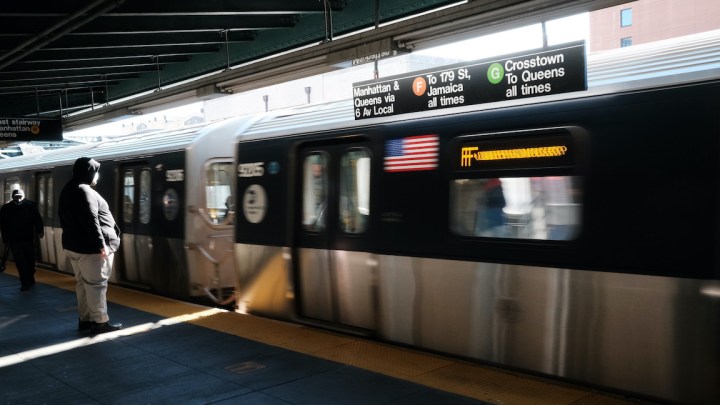
How public transit systems can lure riders back

The New York City subway resumed 24-hour service Monday after more than a year of overnight shutdowns to give workers more time to clean and disinfect trains. It’s a huge step in the city’s return to pre-pandemic normalcy. Subway ridership is picking up, but it’s still only about 35% of what it once was. Overall ridership is similar in other transit-dependent cities like Chicago and San Francisco.
What will transit systems need to do to lure riders back?
Studies haven’t linked COVID-19 outbreaks to public transit. But the thing that defines subways and buses — crowds in tight spaces — means one of the biggest hurdles in regaining ridership is public perception.
Jenna Fortunati at advocacy group Transportation for America said transit systems should continue concentrating on regular cleaning and masks.
“You know, walk around the transit system, and they pass out masks and just make it feel so welcoming and safe,” she said.
The Centers for Disease Control and Prevention says everyone should still wear masks on public transit.
The other piece of safety riders are worried about is crime. New York City announced it’s adding 250 extra police officers to patrol the system. Sarah Kaufman at New York University’s Rudin Center for Transportation said there’s also safety in numbers — ridership numbers.
“Once large crowds return to the subway, I think we’ll see less crime because there’ll be less opportunity,” Kaufman said.
Of course, ridership is also down because many office workers are still at home. And people who can afford it have been driving or using ride-hailing apps.
Ben Fried at research group TransitCenter said systems need to run reliably to bring riders back.
“If they’re out of the COVID mindset and they’re ready to get back on transit, but then the bus they’re waiting for doesn’t come, they’re going to give up pretty soon.”
Mass transit should have the money to hang on through the end of the year. The last stimulus package allocated $30 billion to public transportation networks. And they’ll need that money to recruit. An aging workforce, pandemic layoffs and COVID-related deaths and illnesses have left a lot of transit systems short staffed.
There’s a lot happening in the world. Through it all, Marketplace is here for you.
You rely on Marketplace to break down the world’s events and tell you how it affects you in a fact-based, approachable way. We rely on your financial support to keep making that possible.
Your donation today powers the independent journalism that you rely on. For just $5/month, you can help sustain Marketplace so we can keep reporting on the things that matter to you.

















